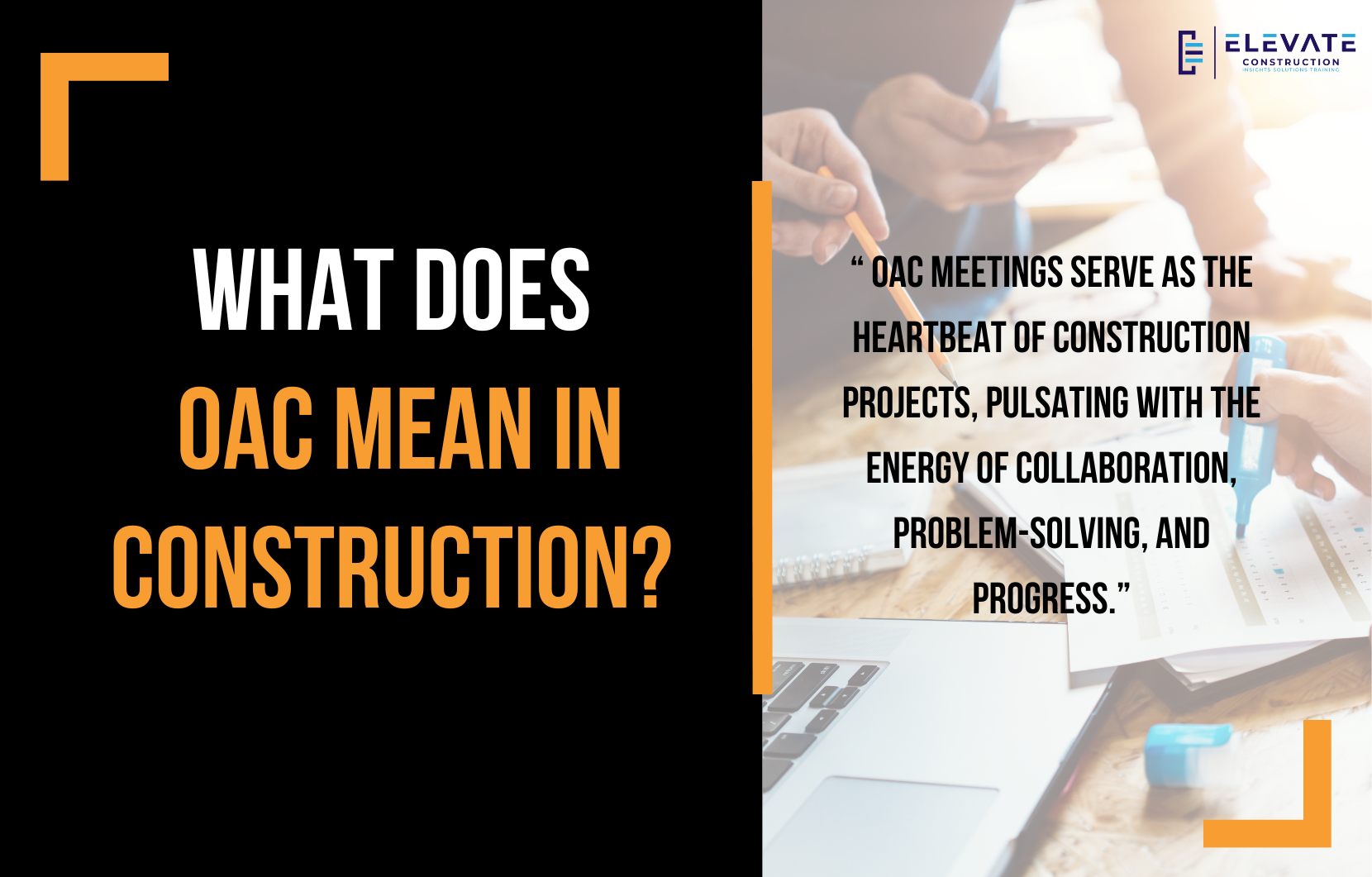In the dynamic world of construction, acronyms abound, each representing a crucial aspect of project management. One such acronym, OAC, often pops up in discussions but can sometimes remain shrouded in mystery for those unfamiliar with its significance. So, what does OAC mean, and how can you harness its potential to transform your construction projects?
Understanding OAC Meetings
OAC stands for Owner-Architect-Contractor, and an OAC meeting serves as the cornerstone for effective project management. This meeting brings together the key stakeholders—namely, the owner, architect, and contractor—on a regular basis, usually weekly, to collaboratively oversee the project’s progress.
The primary objectives of an OAC meeting include facilitating communication, addressing project issues, removing roadblocks, and making pivotal decisions. By fostering open dialogue and alignment among all parties involved, OAC meetings play a pivotal role in ensuring project success.
The Core Functionality of OAC Meetings
At its core, an OAC meeting serves as a platform for problem-solving and decision-making. Each session should focus on identifying, discussing, and resolving critical issues that impact the project’s timeline, budget, and quality.
From procurement status to change orders and design progress, every agenda item should serve as a catalyst for problem-solving and decision-making. By normalizing transparency and embracing a culture of accountability, project teams can leverage OAC meetings to streamline operations and mitigate risks effectively.
Key Principles for Remarkable OAC Meetings
- Attendance Matters: Ensure that the right decision-makers with the necessary authority attend OAC meetings to expedite decision-making and problem-solving processes.
- Craft a Purposeful Agenda: Move beyond superficial updates and ensure that each agenda item contributes to identifying and resolving project challenges.
- Effective Communication: Foster open communication channels to promote transparency, alignment, and cohesive teamwork among all stakeholders.
- Embrace Problem-Solving: View OAC meetings as opportunities to tackle real problems head-on, fostering a culture of collaboration and innovation.
- Optimize Decision-Making: Accelerate decision-making by establishing clear timelines and protocols for resolving critical issues that arise during the meeting.
- Document Everything: Maintain comprehensive meeting minutes to document discussions, decisions, and action items, providing a historical record for future reference and accountability.
Conclusion
In essence, OAC meetings serve as the heartbeat of construction projects, pulsating with the energy of collaboration, problem-solving, and progress. By adhering to the principles outlined above and embracing the transformative power of OAC meetings, project teams can unlock new levels of efficiency, effectiveness, and success in their endeavors.
If you want to learn more we have:
-Takt Virtual Training: (Click here)
-Check out our Youtube channel for more info: (Click here)
-Listen to the Elevate Construction podcast: (Click here)
-Check out our training programs and certifications: (Click here)
-The Takt Book: (Click here)
Discover Jason’s Expertise:
Meet Jason Schroeder, the driving force behind Elevate Construction IST. As the company’s owner and principal consultant, he’s dedicated to taking construction to new heights. With a wealth of industry experience, he’s crafted the Field Engineer Boot Camp and Superintendent Boot Camp – intensive training programs engineered to cultivate top-tier leaders capable of steering their teams towards success. Jason’s vision? To expand his training initiatives across the nation, empowering construction firms to soar to unprecedented levels of excellence.
On we go!


